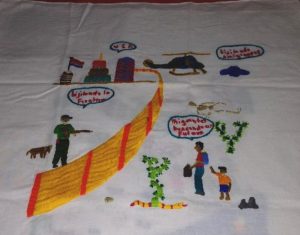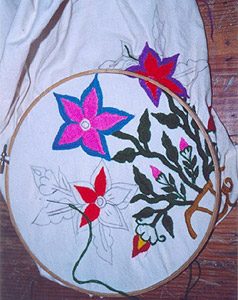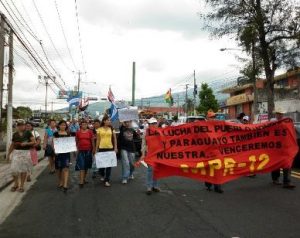Delegations, Migration
Bangor delegation on migration in the salvadoran community Carasque
Joanie Ellis, from PICA, wrote the following after visiting Carasque, a community in the department of Chalatenango in El Salvador.
We hope you enjoy this material, included in their June newsletter.
Leaving Carasque
Joanie Ellis
In my dream we are riding on a bus filled with many Caresqueños. Laughing, singing, all in high spirits, I’m not sure where we’re headed, but I know it’s someplace special. There’s a young girl, maybe 10, near the front of the bus. She has Down’s Syndrome and the wonderfully beatific smile of one who has been selected for a special privilege.
Indeed, she’s the one chosen today to wear the community outfit for whatever this special occasion is. She’s decked out in a Super Hero costume, red, gold and black and is clearly aware of her special status as she dances and swoons to the songs we all sing. Laughter fills the air and our high spirits can’t be contained. As the bus morphs into a performance space, she turns her back to gaze into a mirror and her smile grows even larger as she delights in the image of herself in the costume.
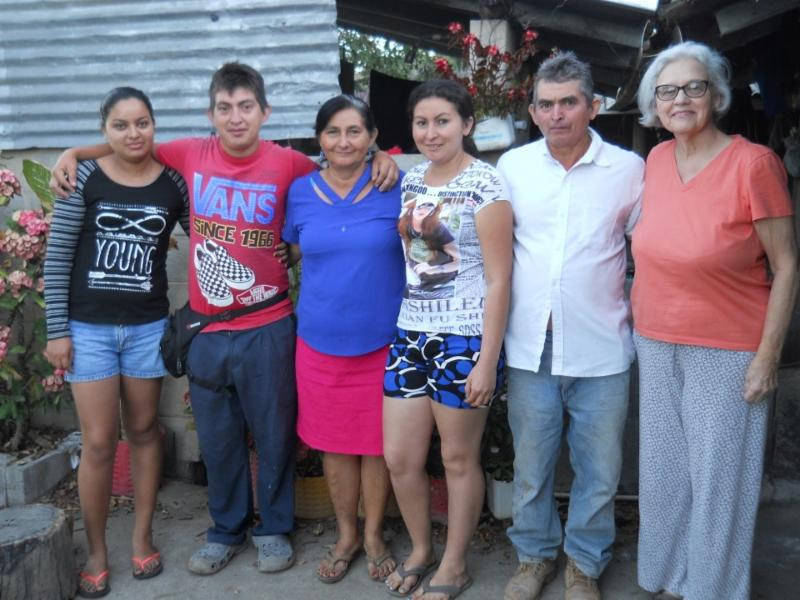
We are now standing in an arena-like space and some of us are part of an audience while a group of 8 to 12-year-old girls fills the stage. They’re wearing white dresses and veils that look like a mix between first communion dresses and elaborate ballerina costumes. They dance and pirouette across the stage while we all applaud and smile broadly at the beauty of the moment. There are tears of joy as we all, dancers and audience alike, soak up the warmth and love of this community. I too am crying with joy when, unbidden, the thought of leaving permeates my awareness and my tears turn to ones of sadness.
This is the dream I had on my last night in El Salvador. It encompasses much of what the experience of Carasque was for me. The strong ties that bind this community together in their commitment to stay intact as a community are what impressed me most about the experience.
In the meetings we held with the Directiva, the Women’s Sewing Cooperative, the scholarship students, and with those who have relatives in the U.S. we heard repeatedly how important community is for them and how hard they are working to keep their community healthy and strong.
We listened to the stories of those who have relatives in the U.S., those who have returned, and those who continue to think about making the journey. We heard about their hopes and fears for the future, how they think their lives will be changed if TPS and DACA recipients are all forced to return. “Everyone has family here, and they will be welcomed,” they said, “but it will be difficult.” The economy will suffer further without remittances from the north, and there is the worry about the possibility of bad habits being brought back by people who have lived in the U.S. for years.
Carasque is a well-run and respected community with strong democratic structures intact. Yet their talk of dead bodies found in the roads near the community and concerns about gang intimidation, robberies, and murder experienced by some of the students attending school in San Salvador make the threat of encroaching violence real. How long can they hold out against this scourge?
Upon returning to San Salvador we visited with organizations and individuals working with various aspects of immigration. The intertwined themes of economic hardship and violence perpetrated by gangs/governmental agencies reinforced for me the tremendously arduous task faced by our Caresqueño brothers and sisters as they struggle to combat this two-pronged threat to their existence as a community. Where previously Salvadorans were forced to leave because of extreme economic hardship caused in no small part by unfair trade deals and labor practices, now families are faced with extreme violence and extortion from gangs, police and military.
Whether we were with representatives from CRISTOSAL, CRIPDES, Jenna Knapp, UNHCR or CARITAS we heard repeatedly about the gang violence that forces families from their homes, extorts individuals, families, communities, and businesses with threats of violence, and causes such disruption in the social order that one wonders how a country can survive.
My PICA colleagues with many years of sistering experience had explained the severe economic hardships faced by Salvadorans after the war years and, further, after NAFTA and other trade agreements made it almost impossible for farmers to sell their products. Knowing the theme of our delegation was to learn more about the realities of forced migration, I had read The Beast: Riding the Rails and Dodging Narcos on the Migrant Trail by Oscar Martinez to learn more about the dangers faced on the journey to el norte. It left me with the question “How/Why would anyone risk those dangers to come to a country that treats immigrants so poorly?” Even existence as a subsistence farmer, I thought, seemed far better than the risk of torture, rape, and murder faced on the journey north.
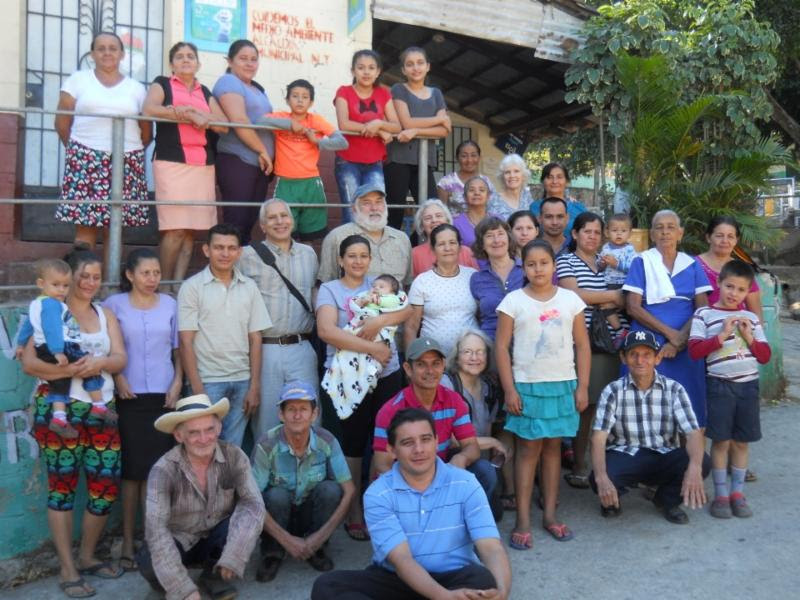
After listening to the statistics on gang violence and hearing personal accounts of young children forced into gangs (“They don’t call them ‘child soldiers’,” said Jenna Knapp, “but that’s what they are.”) and having one organization after another present the most gruesome statistics with an air of resigned desperation, it became clear to me that this is why they continue to leave. The risk of the journey is one they are willing to make: maybe their coyote will not extort them, maybe they will not be forced to carry drugs, maybe there will be no shoot-outs, maybe they will actually make the crossing-all possibilities they will chance to avoid the near certainty of the violence present at every level of Salvadoran society today.
And whether they leave or whether they stay the Salvadorans continue to put one foot in front of the other every day with smiles on their faces, generosity in their hearts and the deepest sense of conviction that this, too, they will survive as they continue to say, “Estamos aqui.”

